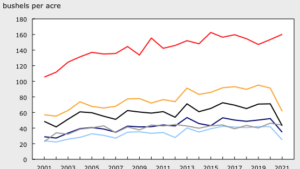
New Marketing Era
“Every farmer I talk to is pleased to have been given their freedom by the Harper Conservatives’ Bill C-18. I think none are more pleased than long time farmers who told me they never thought they’d see the day. Now their sons and daughters can do something they were unable to do for most or all of their farming careers—market their own wheat and barley and take advantage of the increased opportunities that are now open to them, just as they do with all their other crops. It’s like a weight has been lifted from them.”—Doug Robertson, president, Western Barley Growers Association
Seed Treatment Market seed seed treatment report
“While seed can be treated on the farm by the farmer, it’s not easy to get good distribution on the seed. Farmers in developed and developing countries alike are recognizing the value of getting new seed each year and seed companies supplying that seed are realizing the value of treating their supplies so that the farmer increases his/her chance of getting a better stand and crop yield,” said Duncan Allison, senior associate at Kline’s Specialty Pesticides Practice, after releasing its report, “Seed Treatment Global Series: Market Analysis and Opportunities.”
The United States remains the leading seed treatment market, claiming over 38 per cent of global market share; however, China and Brazil in particular have eroded this lead over the last five years. Brazil now accounts for nearly 21 per cent market share. Of the 10 leading crops encompassed by the report, corn/maize accounts for well over one-third of 2011 seed treatment sales, followed by wheat at just under one-fourth.
Renewable Fuel Takes Off
Ethanol production in Canada in 2012 is estimated to increase 40 per cent from 2011 levels, and biodiesel production is estimated to increase nearly 80 per cent, according to a USDA Foreign Agricultural Service GAIN report. Ethanol production will increase to an expected 1,867 million liters, up nearly 40 per cent from estimated 2011 levels. Production is forecast to grow further to 1,948 million liters in 2013. Compared to 2011’s 75 per cent national ethanol capacity use, cumulatively, Canada’s ethanol plants are estimated to be running above capacity at 102 per cent for 2012 and even higher for 2013.














